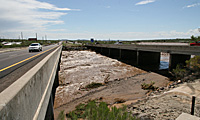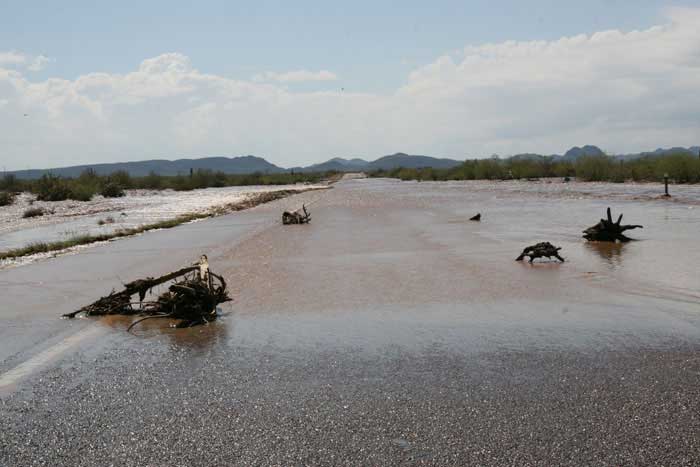Tips for driving in a downpour
Tips for driving in a downpour
August 23, 2017

Flooding
By Caroline Carpenter / ADOT Communications
You’ve heard us say it many times: “Pull Aside, Stay Alive” when visibility gets low because of dust. But do you know what to do if you encounter heavy rain or flooding on the roads?
Monsoon season is still upon us, meaning heavy downpours are possible at any time. Even though much of the state is desert, heavy rain and flash flooding occur every year.
Today we’re sharing tips about driving in a downpour:
- Don’t risk crossing a flooded wash, even if it doesn’t look deep. It's easy to underestimate the power of running water; just a foot can carry off a vehicle.
- Avoid areas where water is pooling in travel lanes; if possible, use center lanes and drive in the tracks of the vehicle ahead of you.
- Do not drive around ‘Road Closed’ signs. You risk your life and face being cited under the state’s stupid motorist law.
- If traffic lights are out, treat an intersection just like a four-way stop.
- Expect the unexpected. Have extra supplies, including an emergency kit and drinking water, in case you experience an extended highway closure.
- Storm runoff can loosen boulders and rocks on slopes above highways. Stay alert in rockfall prone areas.
- Leave plenty of room between you and the vehicle ahead of you and be aware of the vehicles around you in other travel lanes. Braking and shorter stopping distances will be affected by wet roads and slippery roadway surfaces.
- It's important to always be looking ahead for potential problems. In low-lying areas along our state highway system, debris, mud and rocks can wind up on the roadway. Keep an eye out for storm debris ahead.
- Before you drive, inspect your windshield wipers and replace them if necessary.
- Turn on your headlights while driving.
- Avoid sudden braking, which can cause you to slide on the wet pavement. To slow down, take your foot off the gas pedal and brake slowly.
- The tires of larger vehicles, like trucks and buses, create spray that can lessen visibility, so don’t follow them too closely.
- Be cautious of hydroplaning. This occurs when a thin layer of water accumulates between your tires and the asphalt and your vehicle loses contact with the roadway. You might suddenly feel your vehicle sliding or drifting because you’ve lost traction. If you feel you are hydroplaning, ease your foot off the gas pedal until you regain traction. Do not brake suddenly. If you are sliding or drifting, gently turn your steering wheel in the direction of your slide.
Arizonans face all types of severe weather and need to be ready to take swift action when the weather abruptly changes.

